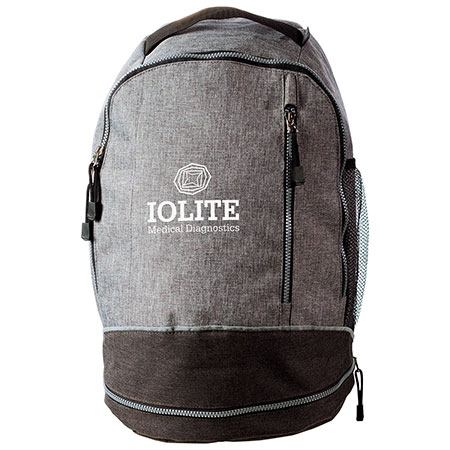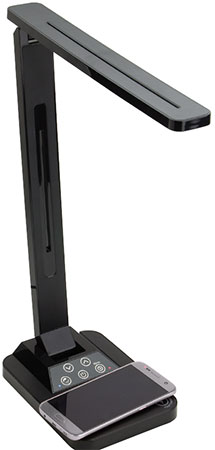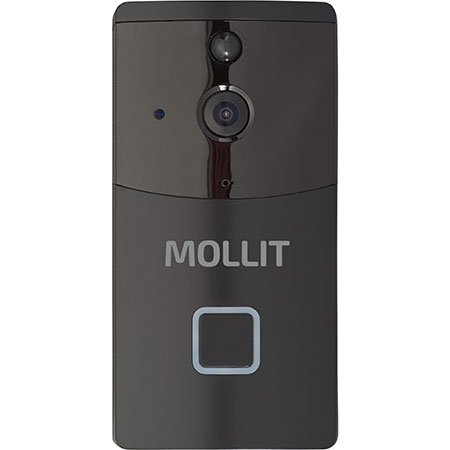November 12, 2018
Stand Out with Social Media
In a merch-saturated marketplace, using social media to target brand fans can cast promo products in a whole new light.
It’s an industry request heard countless times every day – clients go to their distributor asking about drinkware for their next promotion.
In fact, that was the recent request of a food company on the West Coast that manufactures protein shakes and bars for distribution to retail stores across the country. Its marketing agency turned to the team at Brand+Aid (asi/145193) for sourcing and fulfillment.
On the face of it, it sounds simple – drinkware is a mainstay in the promo industry and, according to ASI data, more than half of U.S. consumers own logoed versions. But this was far from a typical mug or sports bottle order.

The company, which has an active social media presence and engaged fans, decided to keep the promotion small but impactful and reward top followers with an awesome gift. Using social, it studied its influencers’ habits, specifically how they were using the company’s products, and found something interesting: Many of them were mixing the protein shakes with their morning cold brew coffee.
It sourced 100 drinkware kits that catered to that habit; Brand+Aid imprinted portable brewers that slowly make cold brew coffee overnight. In the morning, users could mix in the protein shake, put the lid on and take the insulated tumbler on the go. It was paired with a S’well (asi/84326) travel tumbler for water.
“The client was crazy about it,” says Renya Nelson, CEO of Brand+Aid. “The company paid attention and took the time to figure out what the recipients needed. It was a big spend for them, but they get it. We often suggest to clients items that they can take to social media. See how people react when it’s something really cool they can actually use.”
It’s a pronounced shift in the way promo products are used and viewed. For so long, promo items have been deployed in the same manner – brands put their logo on a standard product, distribute it to a large number of people and hope they garner impressions. But the tough-to-swallow reality is that many of those items end up forgotten in a drawer or thrown away. They feel like a cheap mass giveaway and don’t resonate with the people receiving them.
Podcast
Advantages Editor Sara Lavenduski interviews Renya Nelson, CEO of Brand+Aid, about how suppliers and distributors can better develop, pitch and sell quality promotional products that truly resonate with recipients.
With hundreds of thousands of products available in the industry, there’s ample opportunity to find what a distributor and his or her client agree is the best fit for their promotional needs. But it also means the market is getting saturated, which should compel distributors to get more creative with sourcing quality items and how they’re distributed to really make an impact.
“Is there too much product out there? Yes,” says Christopher Duffy, director of marketing at Top 40 supplier Ariel Premium Supply (asi/36730). “When a distributor is looking for a supplier, they want a differentiator they associate with that brand, like the quality.”
When too many products are in the marketplace (many of them slight variations of the same product types), brands run the risk of being lost in the shuffle. “When there are a lot of disposable items, the message can be lost,” says Rick French, regional sales manager for Top 40 supplier Polyconcept North America. “They just become noise.”
It’s called “marketing clutter,” says Charles Taylor, professor of marketing at Villanova University, referring to the massive amount of advertising the average consumer is exposed to every day. And if promotional products are distributed without much thought, they risk being part of that hodgepodge. “There’s a ton of it out there right now,” Taylor says, “so it becomes harder and harder for it to stand out.”
“When there are a lot of disposable items, the message can be lost. They just become noise.”Rick French, PCNA
So what’s the answer? How can the industry stay ahead of trends and better target specific audiences with products they would appreciate?
There’s already a solution. It’s basically free and available just about anywhere; many already use it to find potential clients. If you want to take the next-level step of strategically targeting consumers with finely honed promotions, there’s one overwhelming answer right now: social media.
 ast fall, Taco Bell teamed up with retailer Forever 21 to launch a joint fashion line geared toward millennials and Gen Z and pushed it over social media. Now the Tex Mex chain has the Taco Shop e-commerce store which, among its diverse offerings, carries wedding swag. KFC did something similar with home décor, socks, enamel pins and jewelry.
ast fall, Taco Bell teamed up with retailer Forever 21 to launch a joint fashion line geared toward millennials and Gen Z and pushed it over social media. Now the Tex Mex chain has the Taco Shop e-commerce store which, among its diverse offerings, carries wedding swag. KFC did something similar with home décor, socks, enamel pins and jewelry.
The Boring Company, a subsidiary of SpaceX that’s become known for its branded merch stunts, recently hawked everything from hats to flamethrowers, phone chargers and surfboards on social – and promptly sold out of them. Fans of YouTube creators can buy related merchandise directly from their favorite videos; the creator of Lucas the Spider, a popular YouTube character, made more than a $1 million after a limited-edition plush version of the star of the show was available for purchase. And on Snapchat, Ariana Grande fans can shop branded items linked to her new album using a shoppable Lens.
There’s a strategy to these items – they’re often unexpected, and always appeal to very specific audience. That can’t be said typically of the broad assortment of branded products out there. When quality merchandise is tied to personal preferences or an experience (or both), it can make a huge impact. Social media is an ideal tool for that.
Don't Miss: How to be More Social
“Promotional products are an old-school medium, but brands are seeing the power of their networks of fans,” says Nelson. “They’re inviting them to be a part of the brands they love with tangible products. The question becomes, how do brands give back to diehard fans?”
It starts by finding where they are – and that’s easy. Social media is a gathering of brand devotees like nowhere else. Followers of a brand gather there, engage with the brand and each other, and create interactions brands can tap into to give those fans unique experiences.
“Brands are finding passionate followers online,” says Kevin McTigue, associate clinical professor of marketing at the Kellogg School of Management at Northwestern University. “They give them the opportunity to wear the brand for them with merchandise, and in essence become brand evangelists. Influencers have become brand ambassadors over the past few years, and now there’s a movement toward micro-influencers, those with fewer followers but more authenticity.”
To galvanize fans and keep them loyal, brands are realizing (some more quickly than others) that social is a great way to leverage their brand using tangible manifestations of it – logoed products. “Combining social media and promotional products is a way for people to engage with a brand even more,” says Nelson. “Brands are looking at their fans’ activity on social, and so often now we’re asked to help them with products that can be leveraged there and lead to more discussion and engagement. We want something the end-user will fall in love with. It goes further than a gift or a handout.”
To give fans a true brand experience they’ll remember, they need to receive quality items they’ll want to use frequently. Fortunately, more distributors and end-buyers are becoming aware of that. “We’re seeing brands on retail-inspired items that are used every day,” says French. “We’re finding this industry is expected to offer more retail items faster. It’s becoming an expectation among clients. If we’re just pushing commodity items without utility, the message will be dulled or lost. As long as we keep updating and stay relevant, we’ll be able to break through the clutter.”
 rand fans want high-quality items, but that’s only half the battle. Which items do they want? Which items will they use? What are the hottest products these fans are talking about?
rand fans want high-quality items, but that’s only half the battle. Which items do they want? Which items will they use? What are the hottest products these fans are talking about?
The answer to all these questions can be found on social media. Take trendy items. Traci Tarquinio, vice president of product development at Top 40 supplier Hit Promotional Products (asi/61125), used to conduct her research by window-shopping and walking show floors all over the world. Now, she still attends trade shows, but also spends an hour a day searching through social media, influencers’ accounts and videos to keep in front of trends, and has her team do the same.
“I think this creates additional opportunities for promo,” she says. “It’s less about the dollar value of the product and more about the social media/influencer value. It’s that confluence that’s benefitting this industry, because we’ll have to keep creating and evolving.”
Social media can be used to find out about followers’ preferences, which makes it easier to target merch to specific groups. When Nelson worked at a marketing agency a few years ago, before social media really took off, she was responsible for marketing a product that targeted men 18 to 21 years old. She would physically drive around to skate parks, college campuses and other locations where she would likely find that demographic to advertise the product.
“But they weren’t the only ones using it,” she says. “We missed a lot of people. We didn’t have social media with all the metrics. Brands are getting better with geomarketing, so they know exactly where to target their fan base. Maybe McDonald’s happens to have super-engaged fans in Milwaukee; they can reward that group and break through the noise. It attaches them to the brand by giving them something. Brands are recognizing their fans and realizing it’s OK to blast them with cool stuff.”
“Brands are recognizing their fans and realizing it’s OK to blast them with cool stuff.”Renya Nelson, Brand+Aid
It gives them the feeling of being part of the club, and the swiftness with which merch can land into recipients’ hands assuages their FOMO (fear of missing out). “I wrote a letter to the Michael Jackson Fan Club back in the ’80s to be a member,” says Luke Freeman, founder and president of Wizard Creations (asi/362568). “Now you can just direct message the brand, ask for the item offered and you receive it. Distributors can help brands offer a takeaway that provides an experience and welcomes them as part of the club.”
This tactic doesn’t work solely for global brands. Smaller companies can also use social to encourage the growth of their fan base, but the products have to be well thought-out, and that’s where distributors come in. “They can’t just give out anything,” says Taylor. “Brand equity [a brand’s value, apart from its products and services] can’t be the same for a mom-and-pop as it is for a global company like Apple, but they can definitely build goodwill. There’s no doubt that clever merch – of good quality, distributed in a creative way to a specific target audience – can do big things for small companies.”
But it’s going to take education on the part of distributors because end-buyers still don’t always know exactly how to position branded merch and distribute it in creative ways for maximum impact.
Take a small food service business, a client of Brand+Aid. It first came to Nelson’s team asking about a quick turnaround on imprints for nonwoven totes it had purchased to give away at its store. The company it had gotten the totes from wouldn’t be able to do the imprinting in time for its needs.
But Nelson was dismayed at the bags’ quality. “They were $1 apiece and they were awful,” she says. “I suggested we amp it up. Instead of giving out lots of cheap bags that’ll die soon, I recommended they sell more expensive bags for $8 apiece. They could make some money, the items are out in the marketplace for a longer time and the lifespan is 100 times greater. We don’t sell throwaway consumer goods. We tell clients, wait until you see your logo on products that people are excited to receive. They’ll have more pride in the company and the brand.”
Doubtless Nelson’s lament about low-quality items is familiar to many distributors, because so many brands just aren’t on board yet with the importance of brand equity and imprinting quality pieces. That means in a crowded marketplace there’s still tons of opportunity for distributors and their clients, even the SMBs in their book of business.
“With all the opportunity on social, we’re in a better position to grow in this industry.”Luke Freeman, Wizard Creations
“Not everyone is brand-oriented, so they don’t think they need a brand to promote themselves,” says Duffy. “There’s wide-open opportunity here for our industry. There are certainly still some missed sales.”
But it’s not just the mom-and-pops who need a brand boost; not every large corporation is savvy either. Take Delta Airlines’ SkyMiles Loyalty Program, says Taylor. When he became a million-miler, he was rewarded with a high-end TUMI carry-on suitcase. But quality products have been few and far between. “Usually they do cheap stuff, like a really bad use-once-and-throw-away pen,” he says. “They could do a lot more. There are a number of brands that’ve never done anything to boost loyalty to the logo.”
Now it’s up to the industry to show their clients how to use merchandise effectively. “With all the opportunity on social, we’re in a better position to grow in this industry than in the last 20 or 30 years,” says Freeman. “But you have to be ahead of trends and new ways that businesses are growing in order to capitalize.”
Supplier Showcase: The Retail Touch
Our November cover story in Advantages highlights the importance of investing in superior, retail-inspired promotional products and distributing them in unique ways to appeal to end-users. Avoid product ennui with these quality items, available from industry suppliers, that are sure to impress.
Ariel Premium Supply (asi/36730)

Ariel’s recently launched Taroko line of bags includes five different styles: two duffels, two string backpacks and the Tun Urban Backpack (WBT-UB18). They feature retail-inspired large-tooth zippers, mélange patterns and extra pockets; arielpremium.com.
Ariel Premium Supply (asi/36730)

This new-for-2019 desk lamp (WLT-LL19) allows users to forgo charging cables and wall outlets with its built-in wireless charger for easy device charging; arielpremium.com.
Hit Promotional Products (asi/61125)

Hit’s Grace Collection includes the Pom Beanie with Cuff (1112) and Infinity Scarf (1116), inspired by a recent resurgence in retail demand for chunky knit outdoor accessories; hitpromo.net.
Hit Promotional Products (asi/61125)

The Verdi Stainless Steel Swiggy Bottle (5657) with double-wall insulation now comes in a variety of retail-inspired colors, like metallic copper, rose gold and rainbow; hitpromo.net.
Leed’s (asi/66887)

To meet the current retail tech demand for video doorbells like Nest and Ring, Leed’s now offers the Smart Wifi Video Doorbell (7141-48), which offers a live-streaming video feed to a smartphone; pcna.com/leeds/en-us.
Leed’s (asi/66887)

Consumers love smart house accessories, and this item fits the bill. The Double Outlet ETL Wifi Smart Plug (7141-50) allows users to control plugged-in devices from a specially designed smartphone app; pcna.com/leeds/en-us.
Sara Lavenduski is the senior editor for Advantages. Tweet: @SaraLav_ASI. Contact: slavenduski@asicentral.com